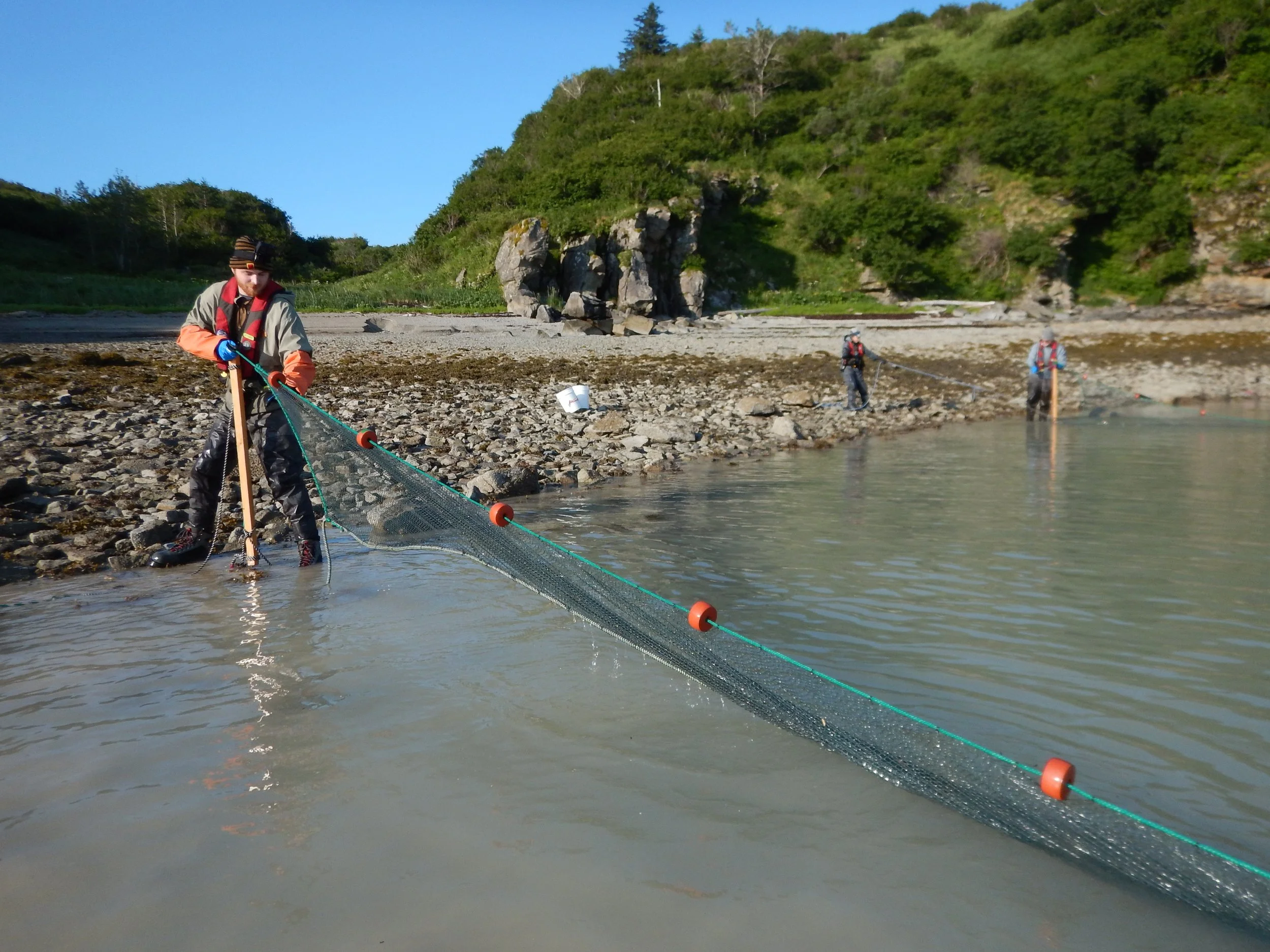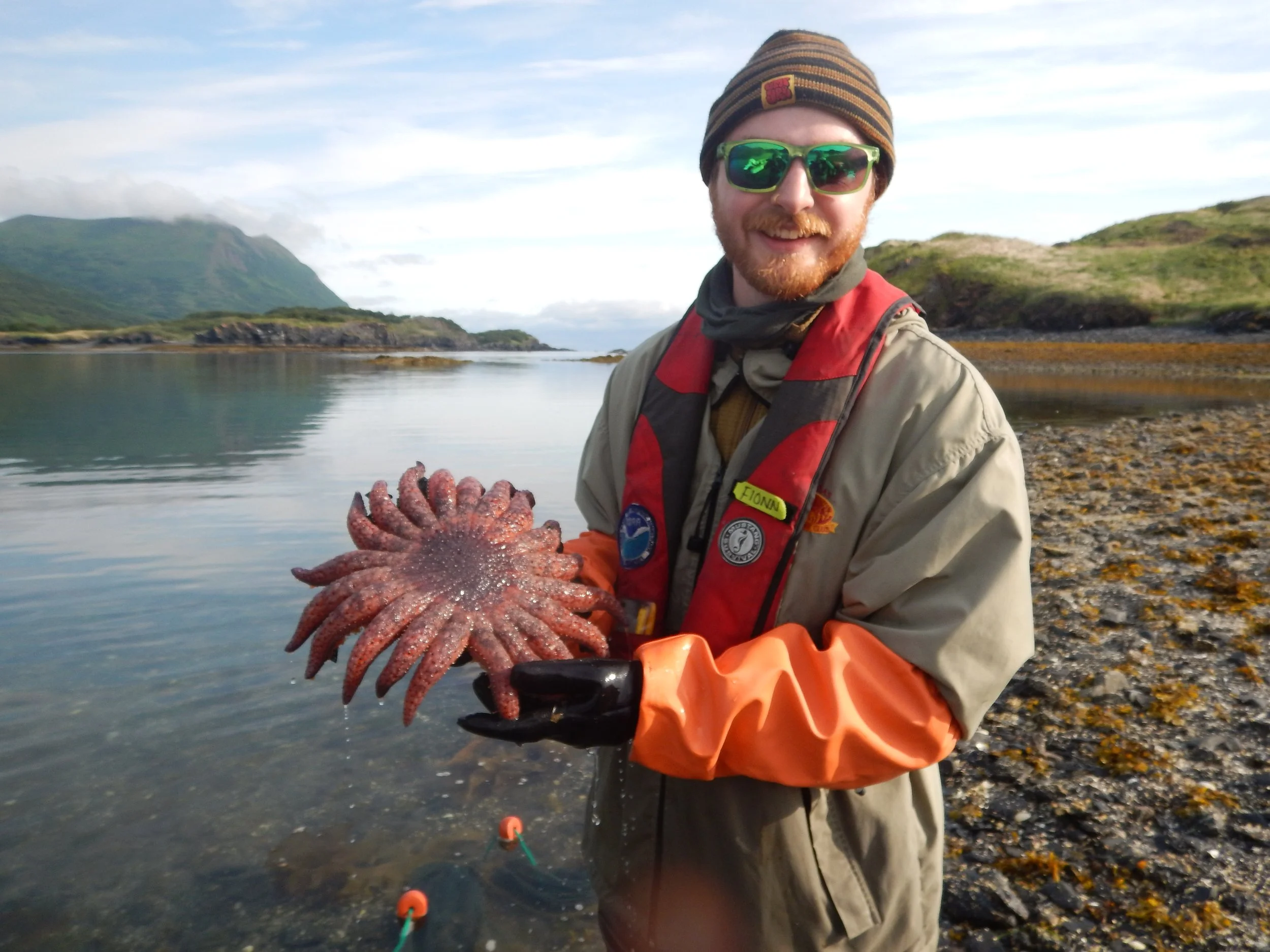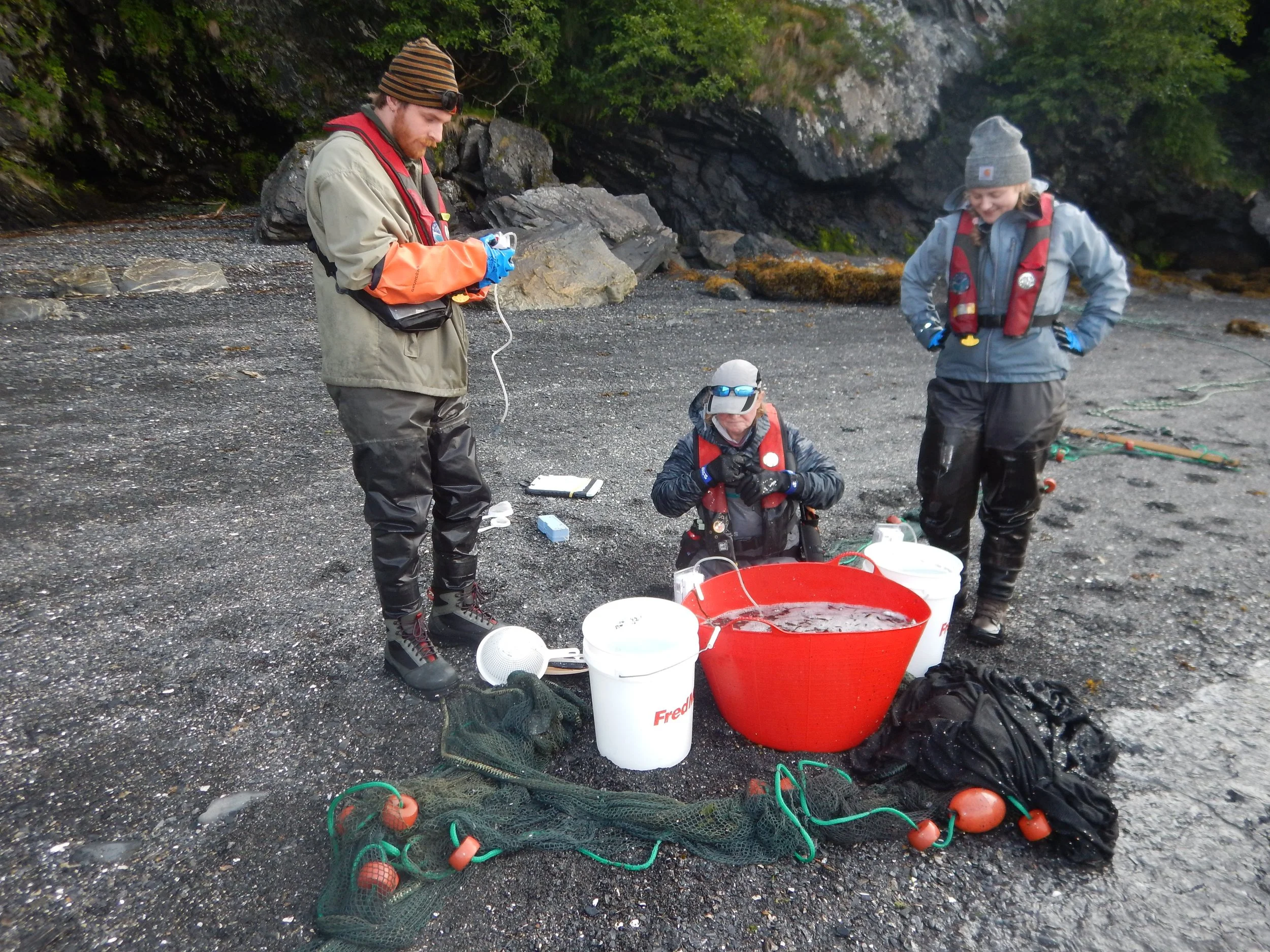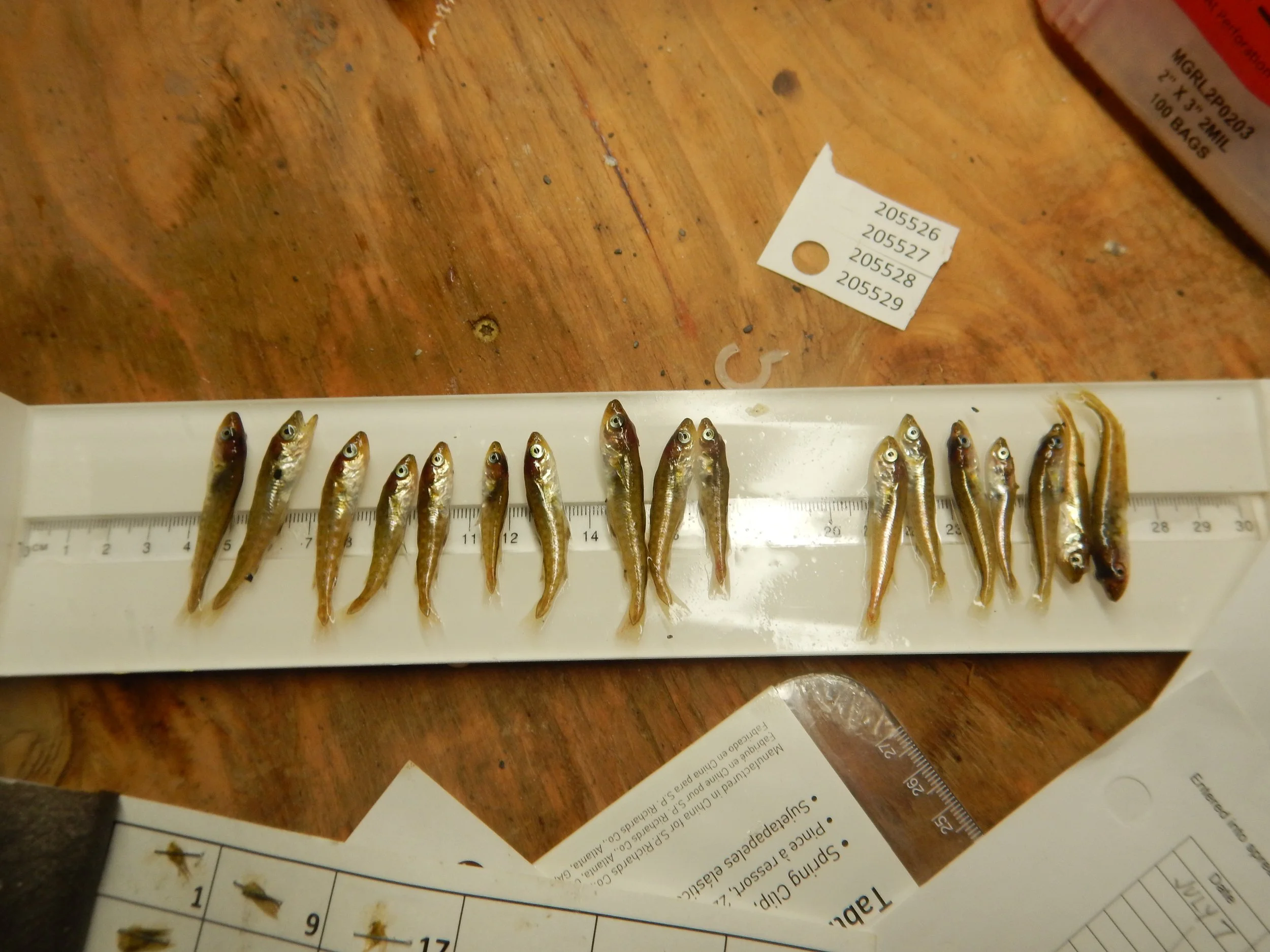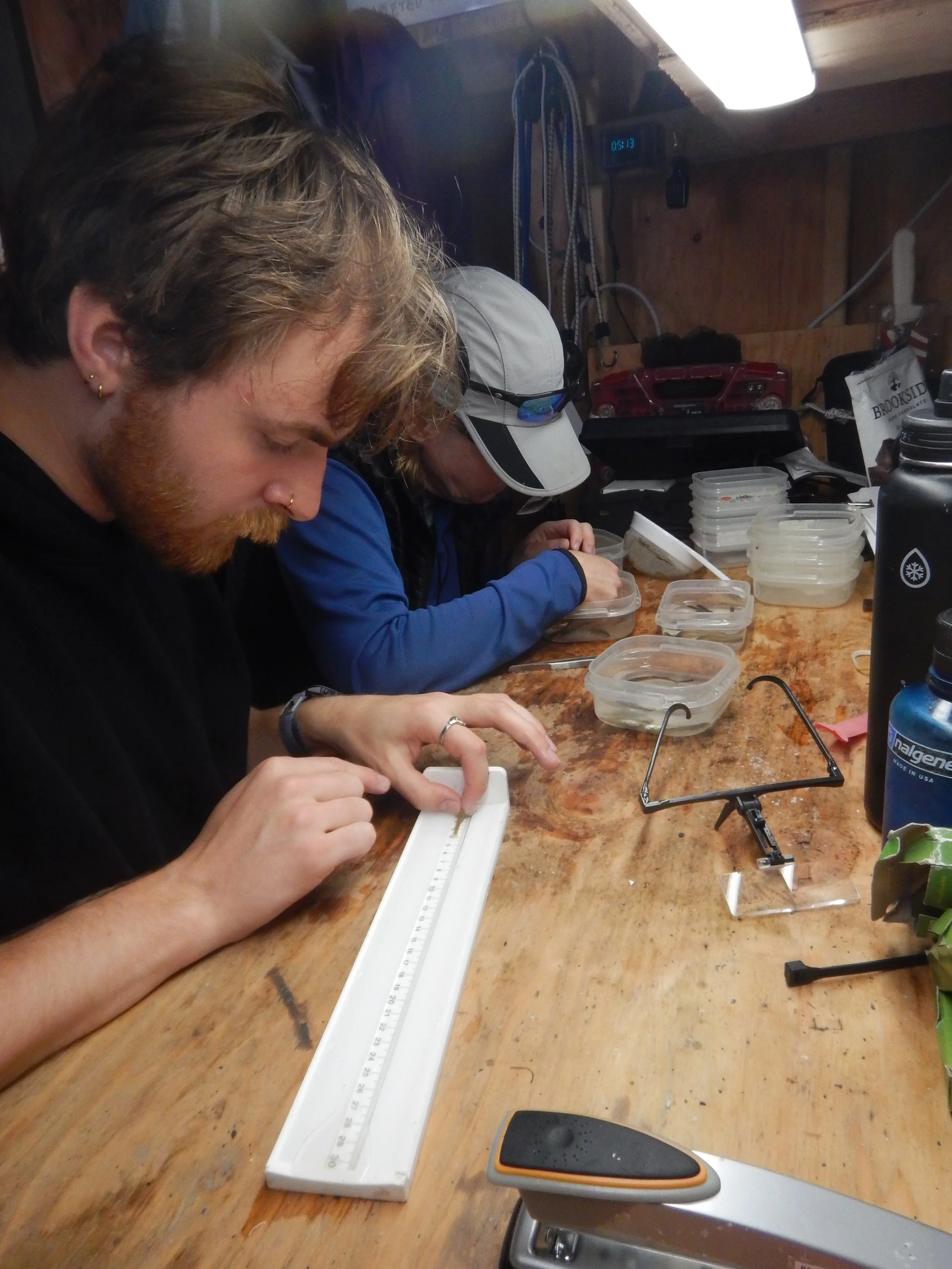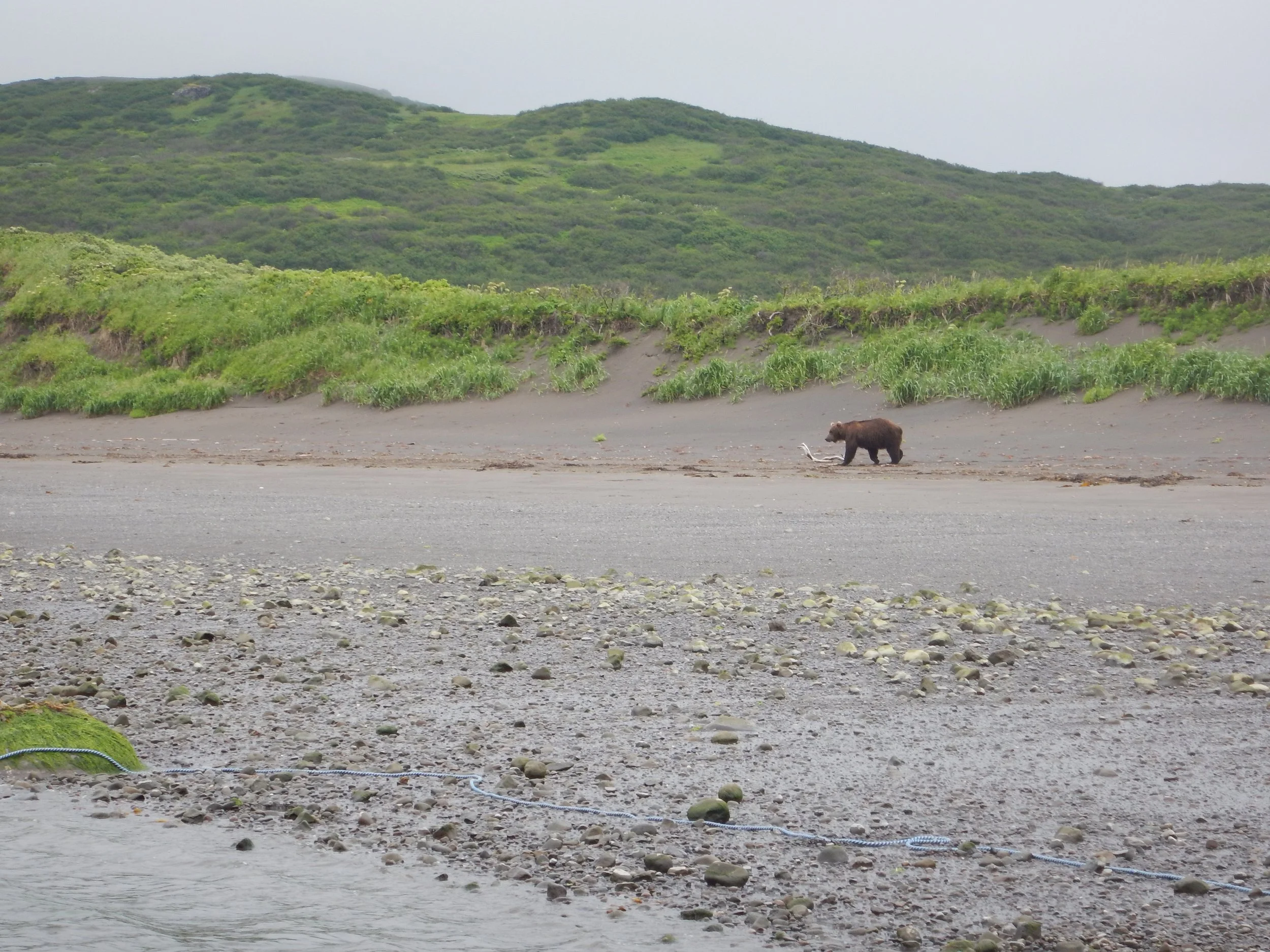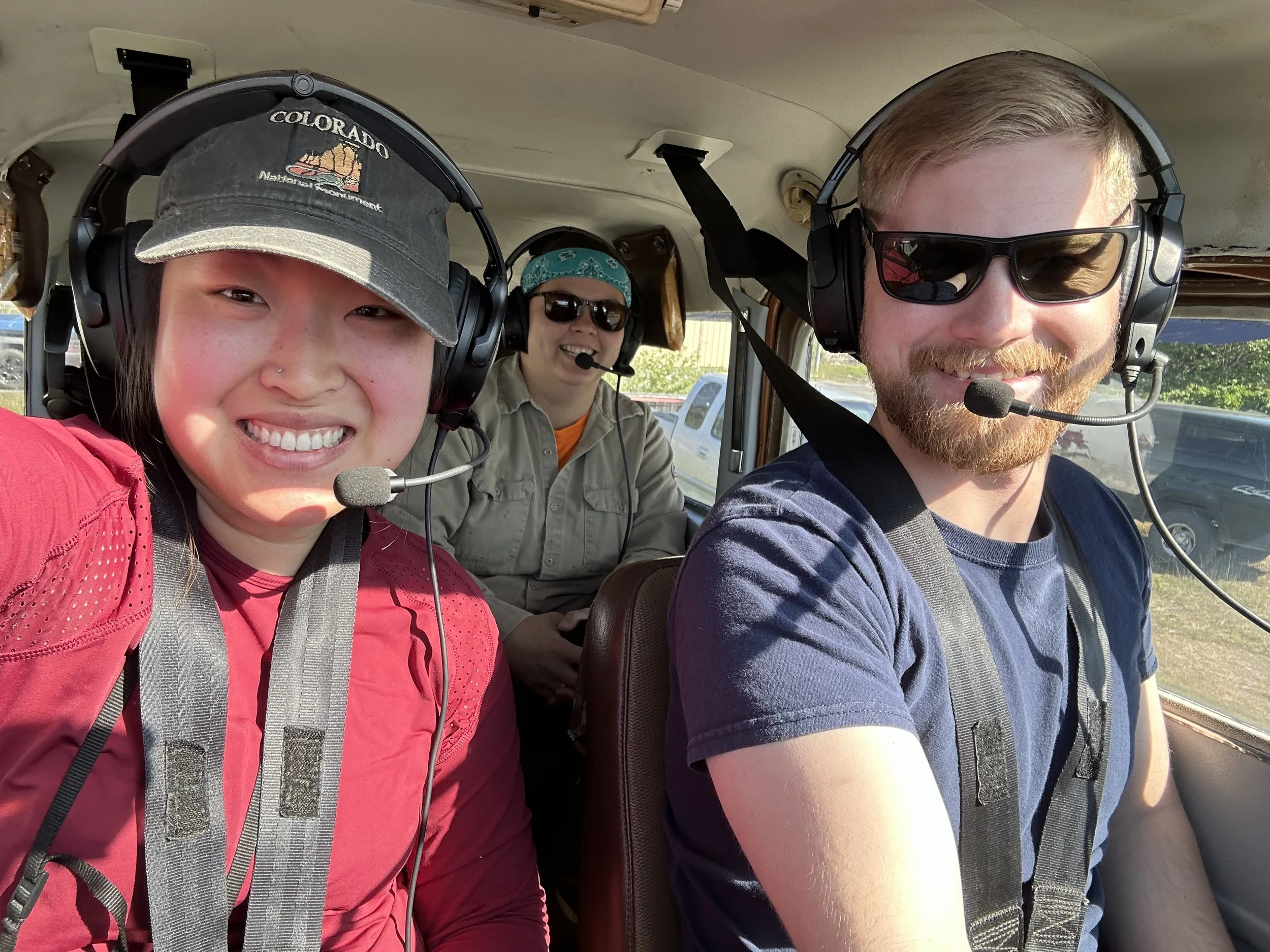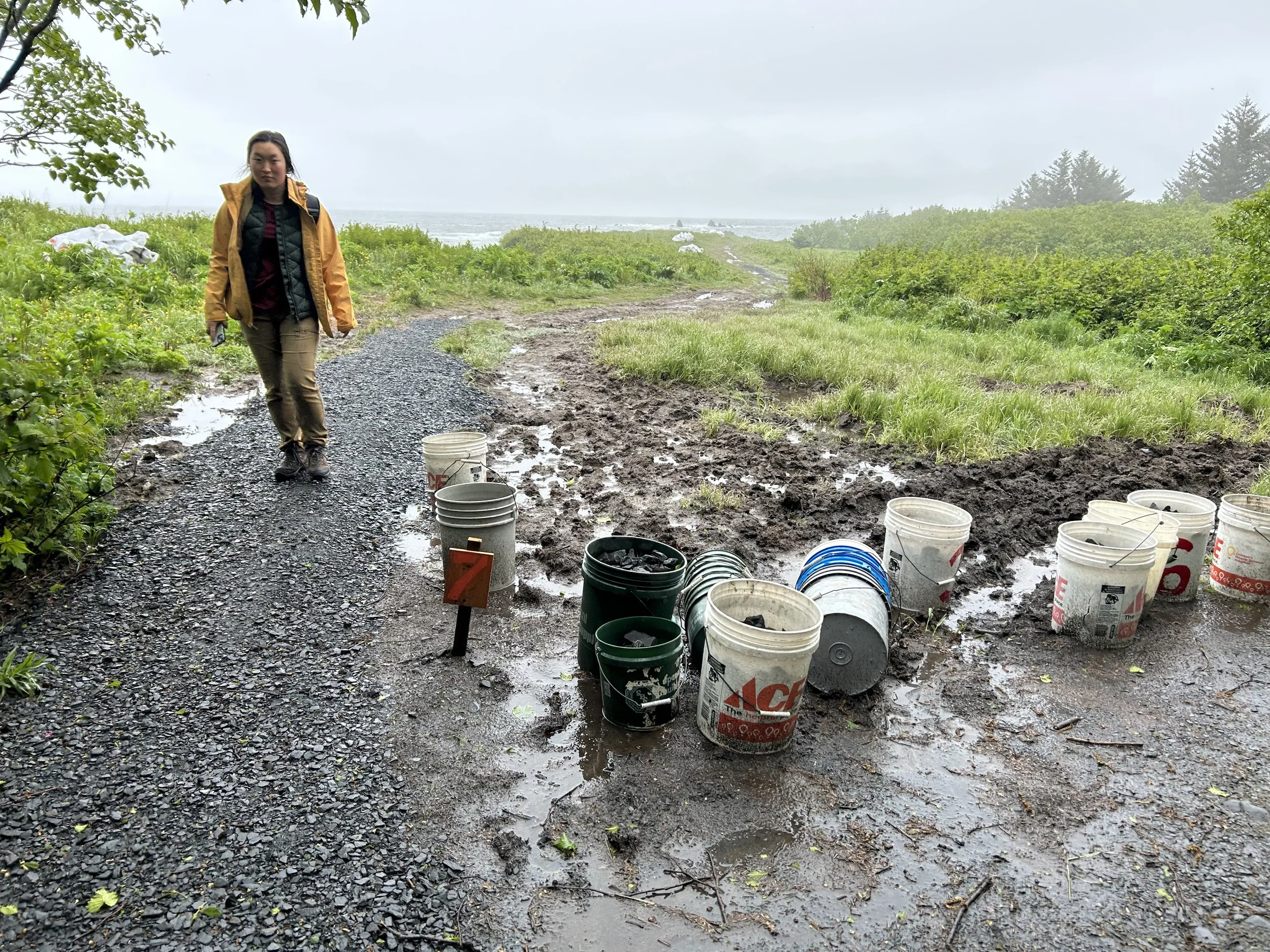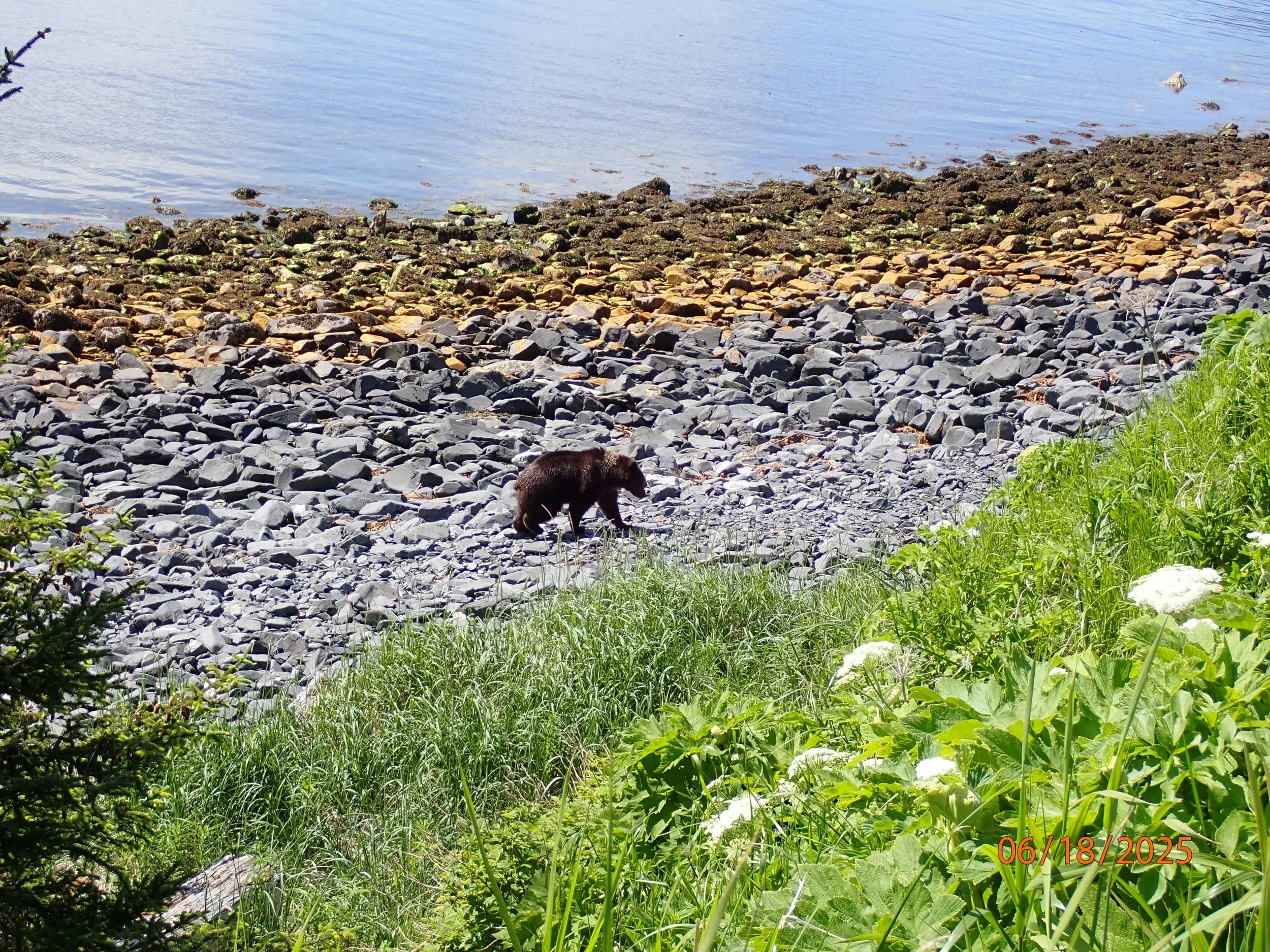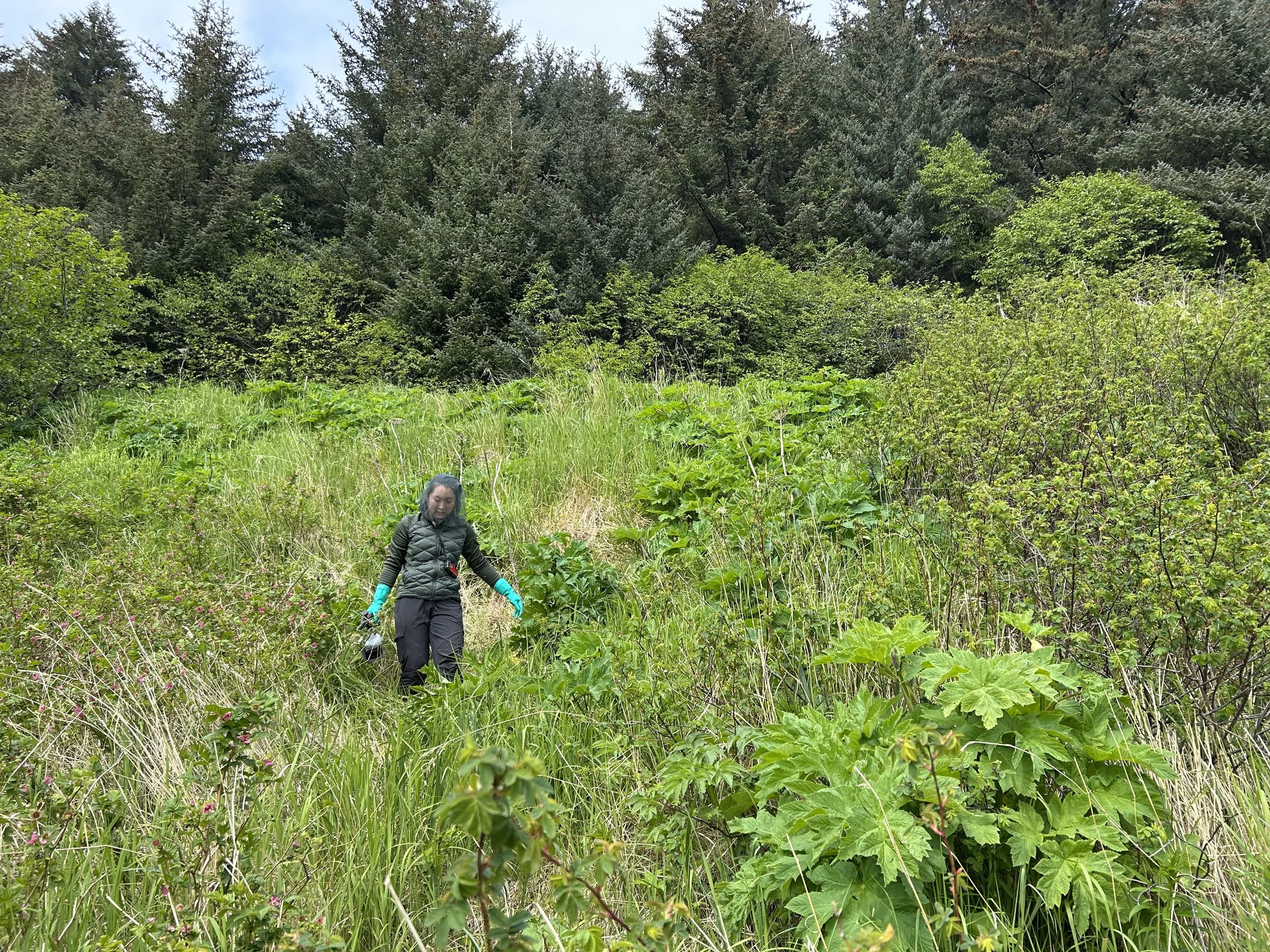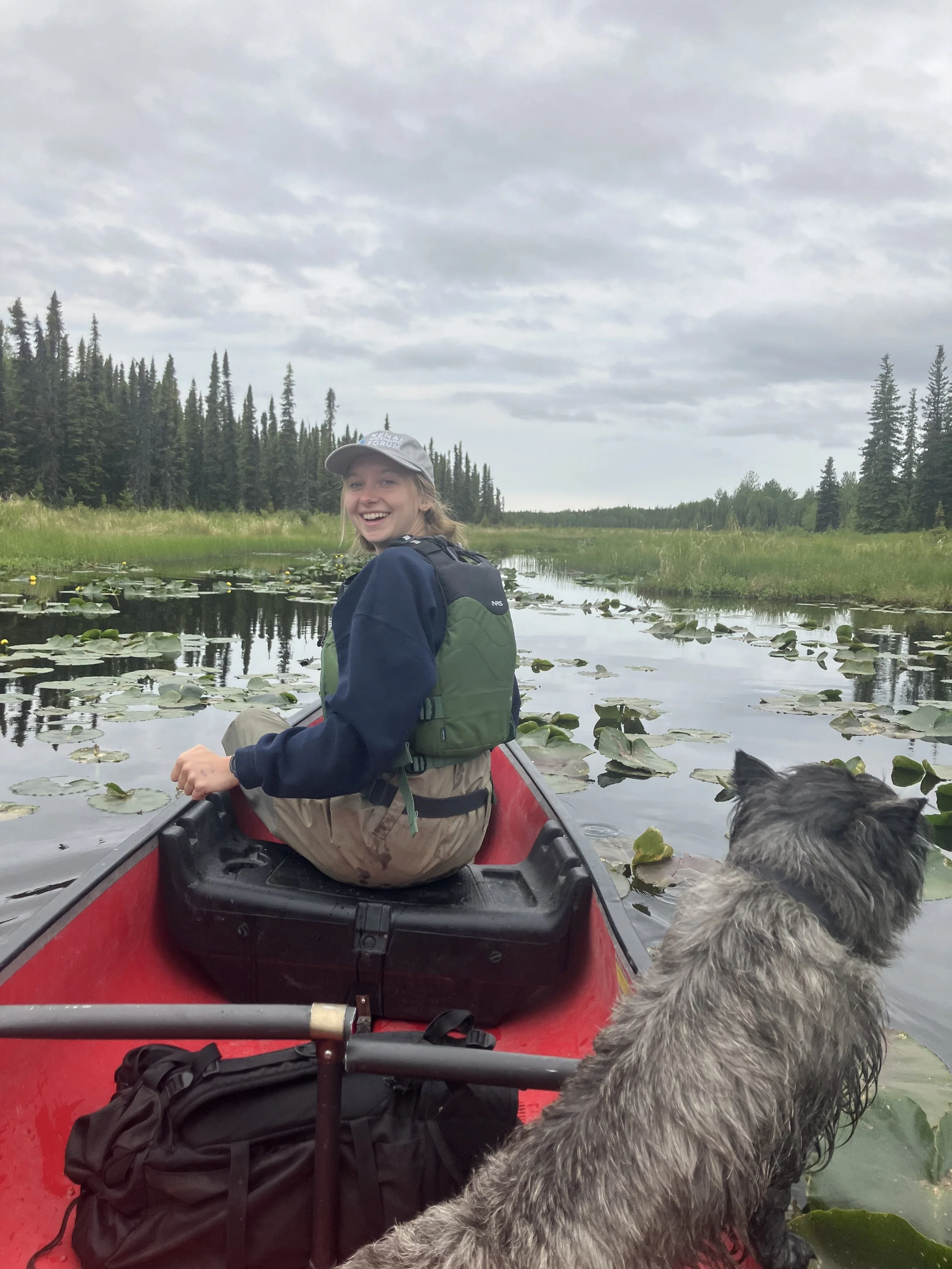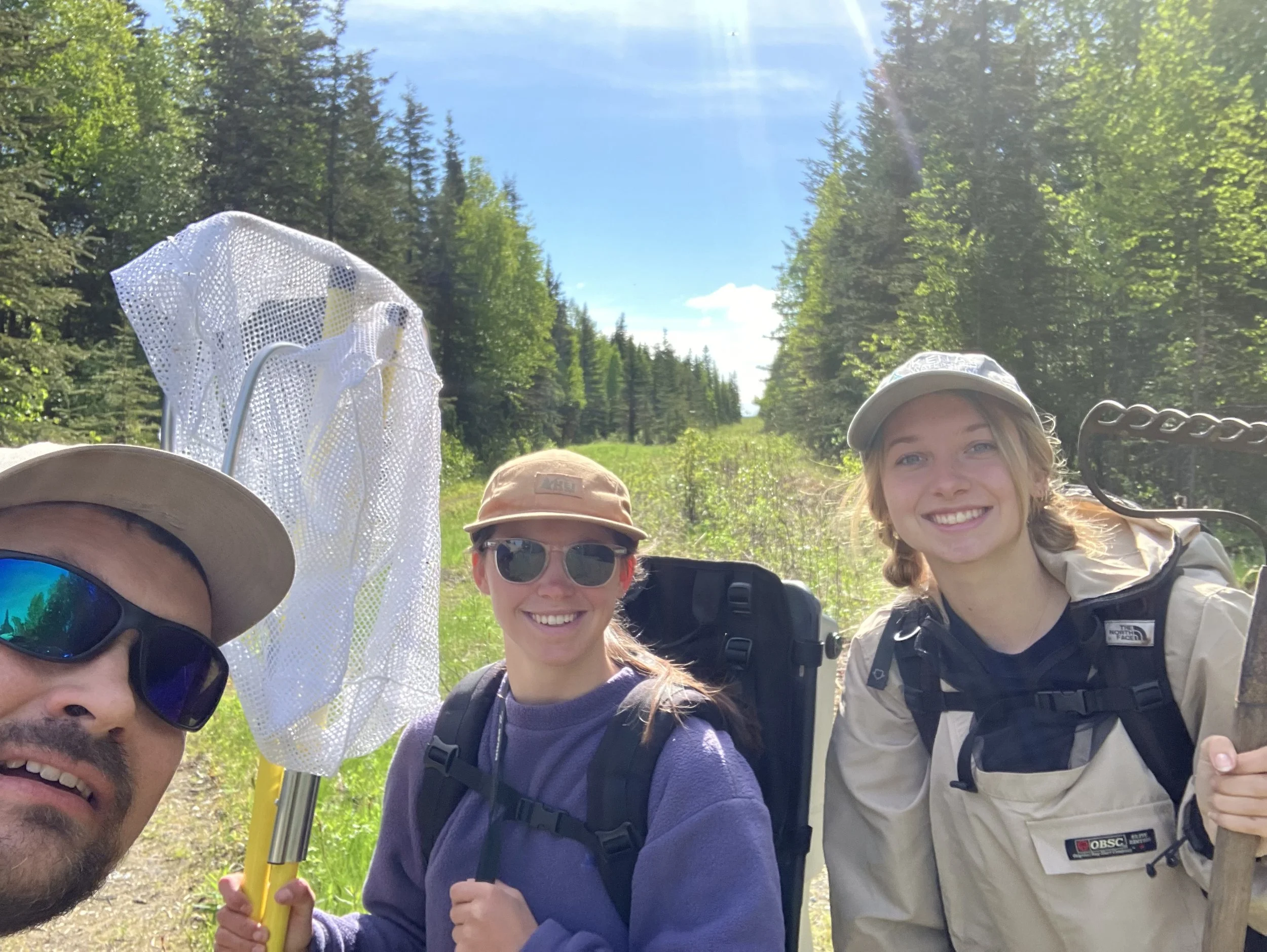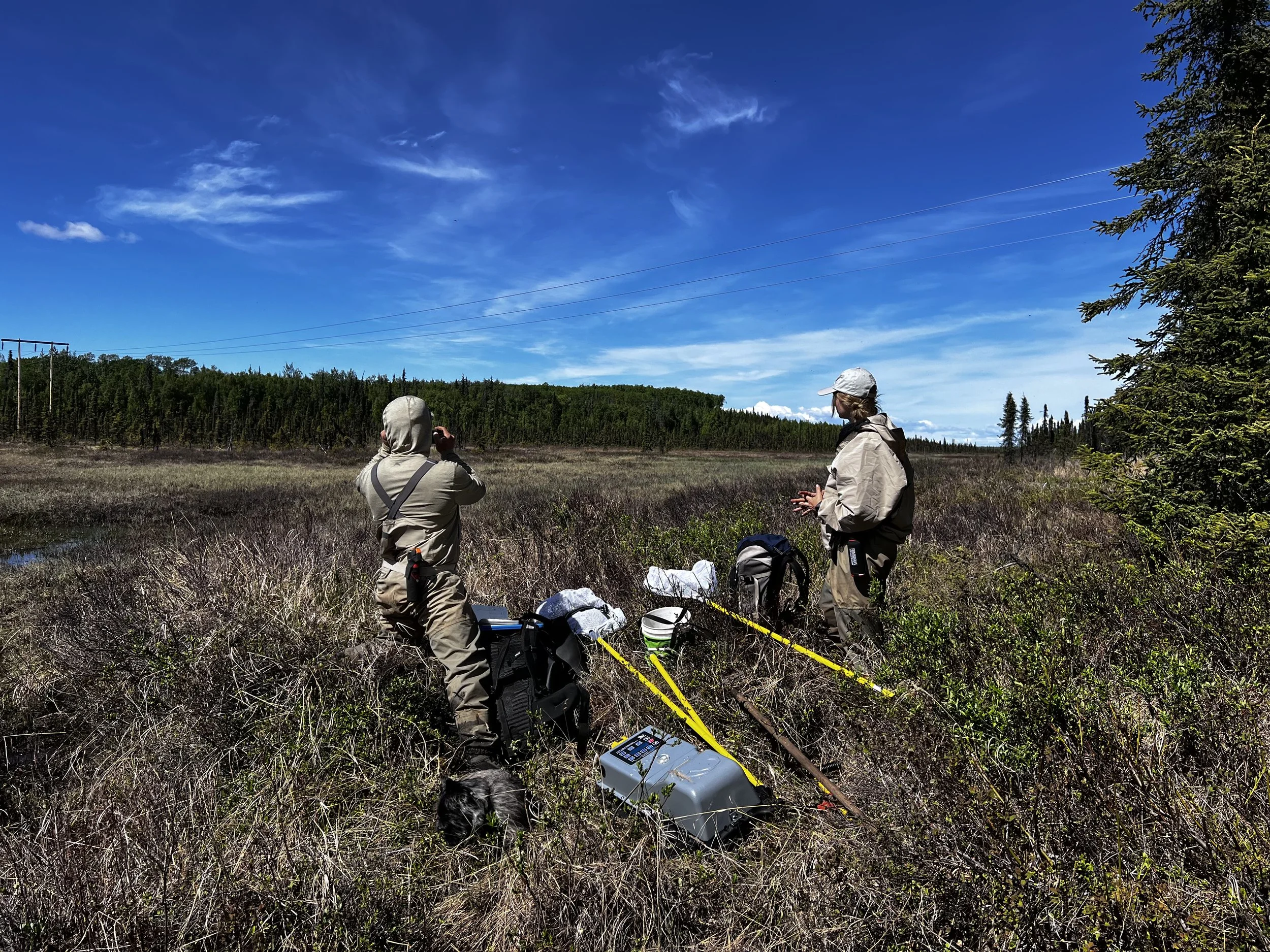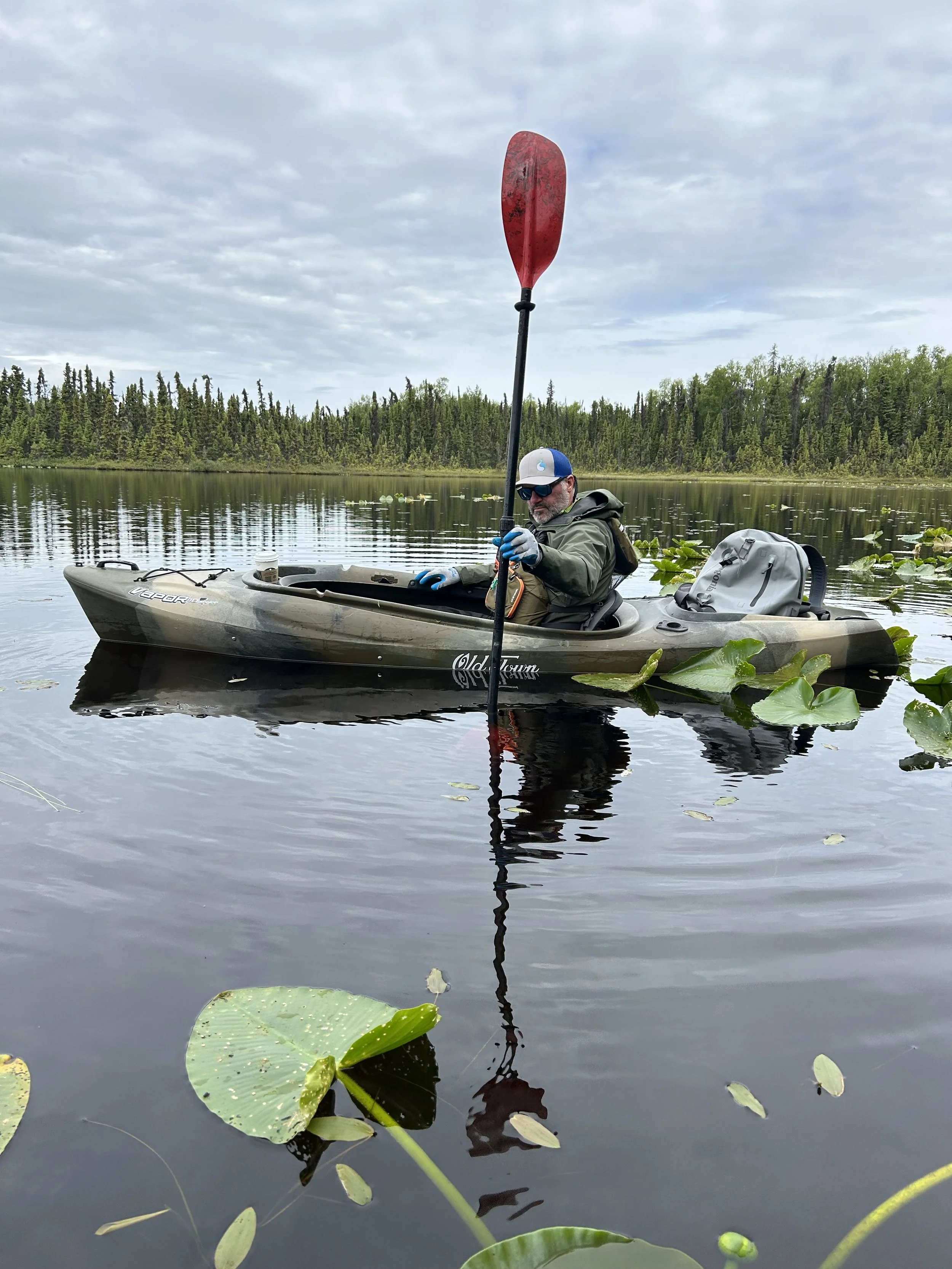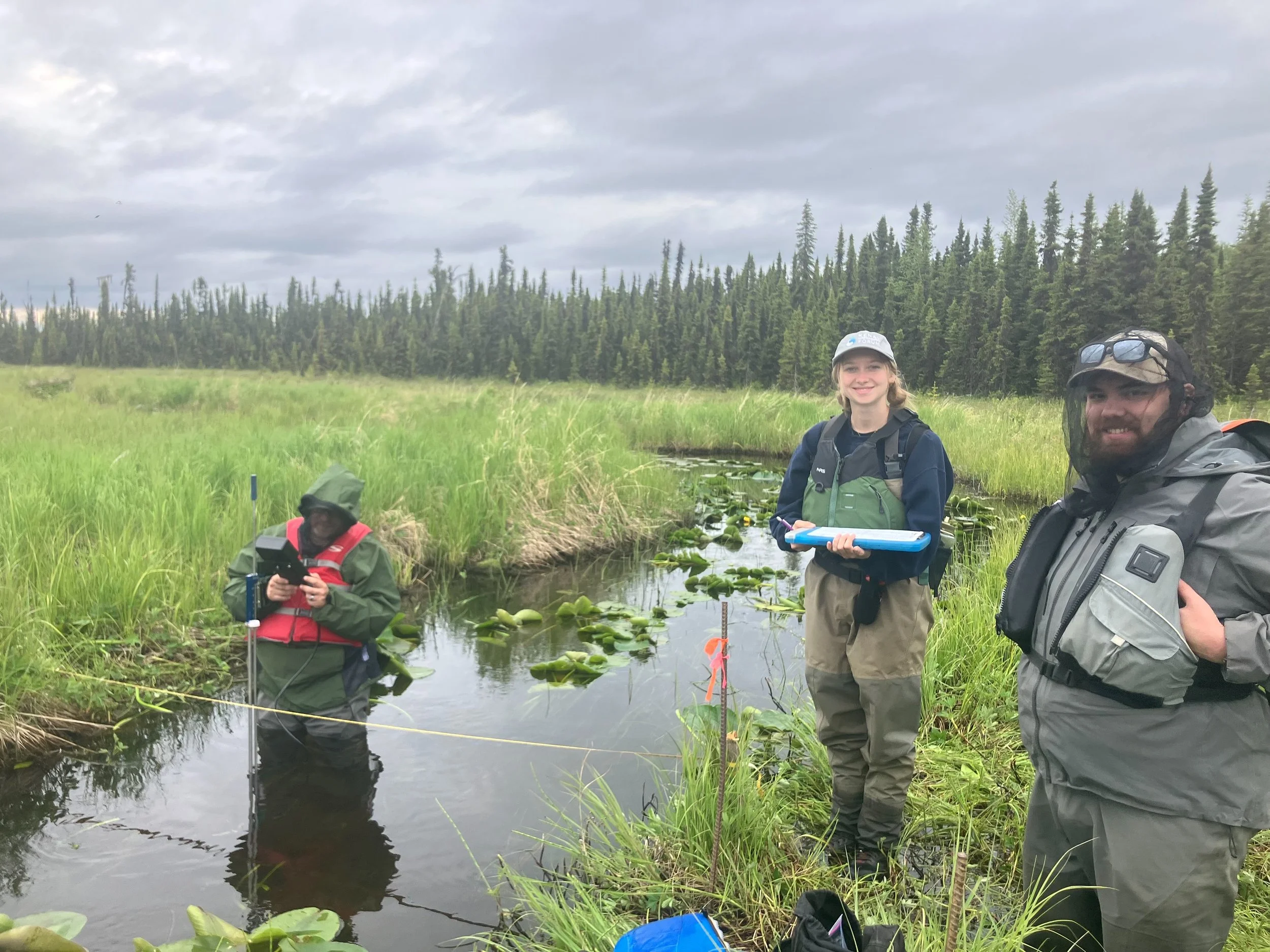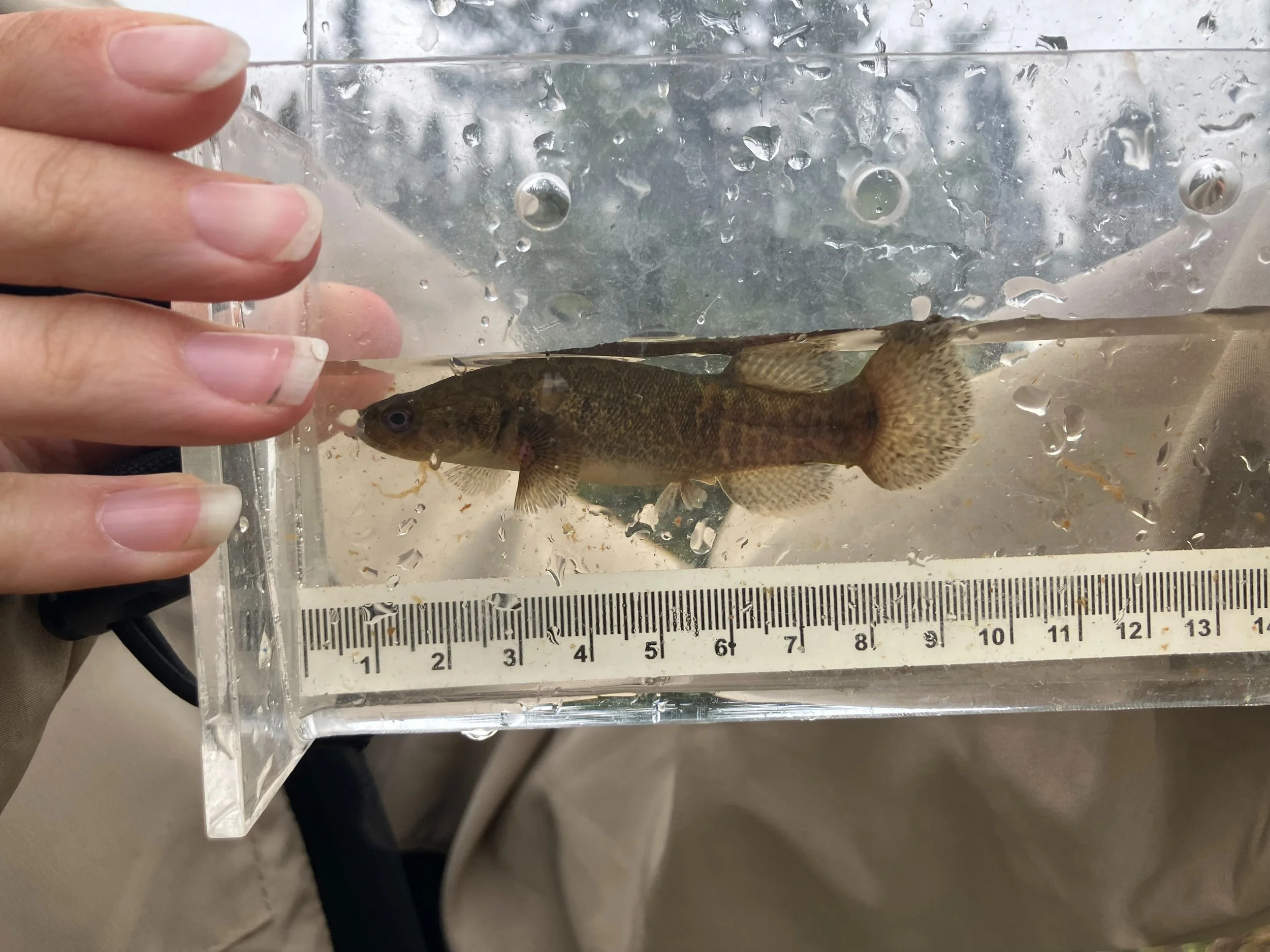
NEWS
GSS in Bayfield County with the Red Cliff Band of Chippewa
Geospatial Services (GSS) at Saint Mary’s University of Minnesota recently sent three team members to Bayfield, WI and the Red Cliff Band of Lake Superior Chippewa Reservation on the Bayfield Peninsula. The trip was part of an ongoing wetland and functional assessment project designed to support both the National Wetland Inventory (NWI) and the Red Cliff Band of Lake Superior Chippewa.
GSS team members Andy Robertson (Executive Director), Eric Lindquist (Project Manager/Analyst), and Kaylee McFarland (GIS Technician) spent three days in northern Wisconsin, working on both tribal and nearby lands. Their main goal was to verify aerial imagery and wetland mapping previously developed by GSS.
The team was welcomed by Jessica Jacobson, Wetland Specialist for the Red Cliff Band, who shared insights on the tribe’s wetland resources and joined the team in the field.
Fieldwork Highlights
Over the course of the trip, the team visited a series of field sites to compare pre-mapping data with on-the-ground wetland conditions. Field activities included:
Identifying wetland vegetation
Collecting soil samples to confirm wetland soils
Documenting rivers and streams
Taking site photos for future mapping updates
These efforts ensure that the mapping meets NWI standards and accurately reflects current wetland conditions. The resulting data will contribute to a comprehensive wetland inventory, supporting planning, conservation, and resource management across northern Wisconsin.
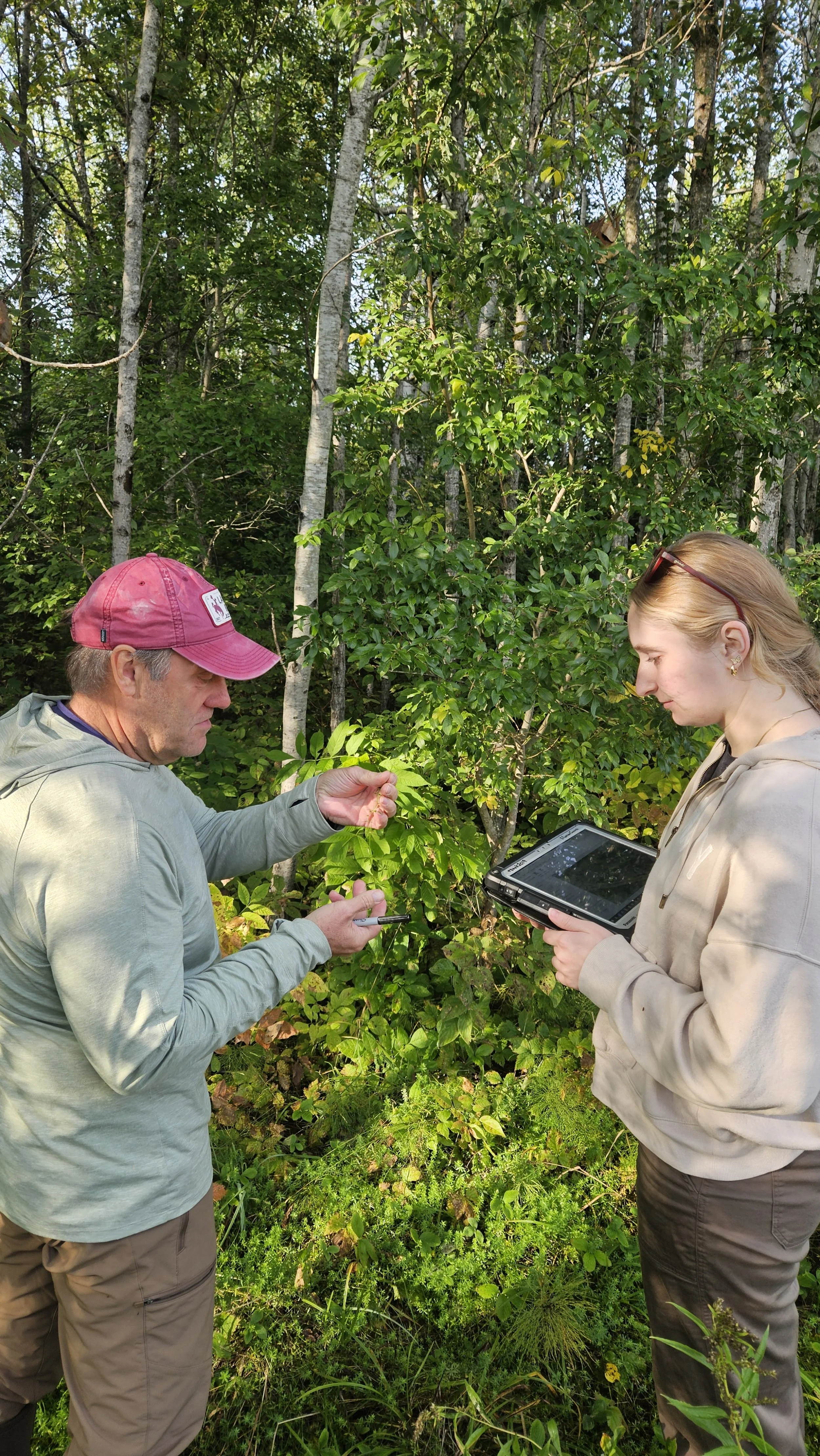

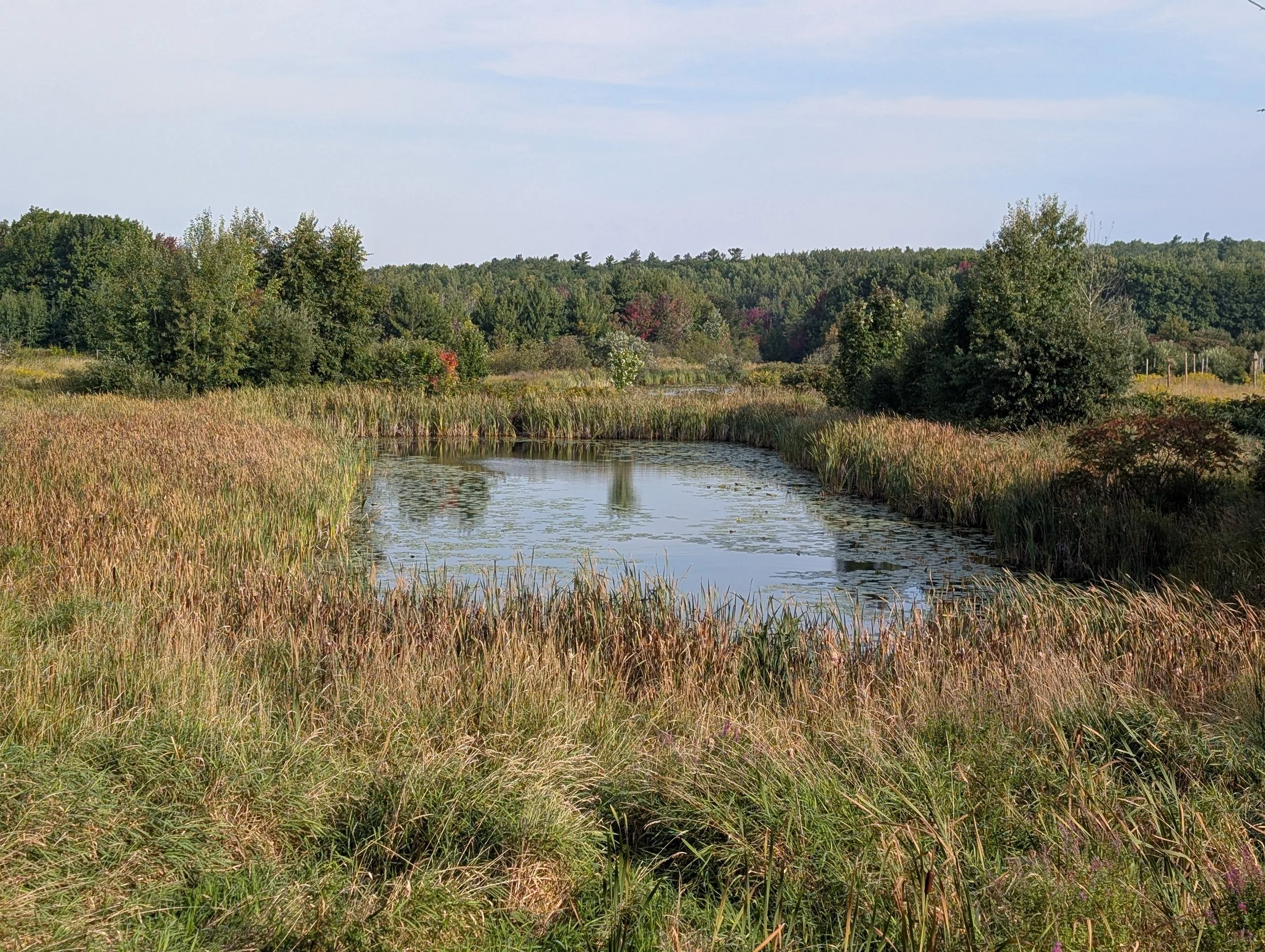

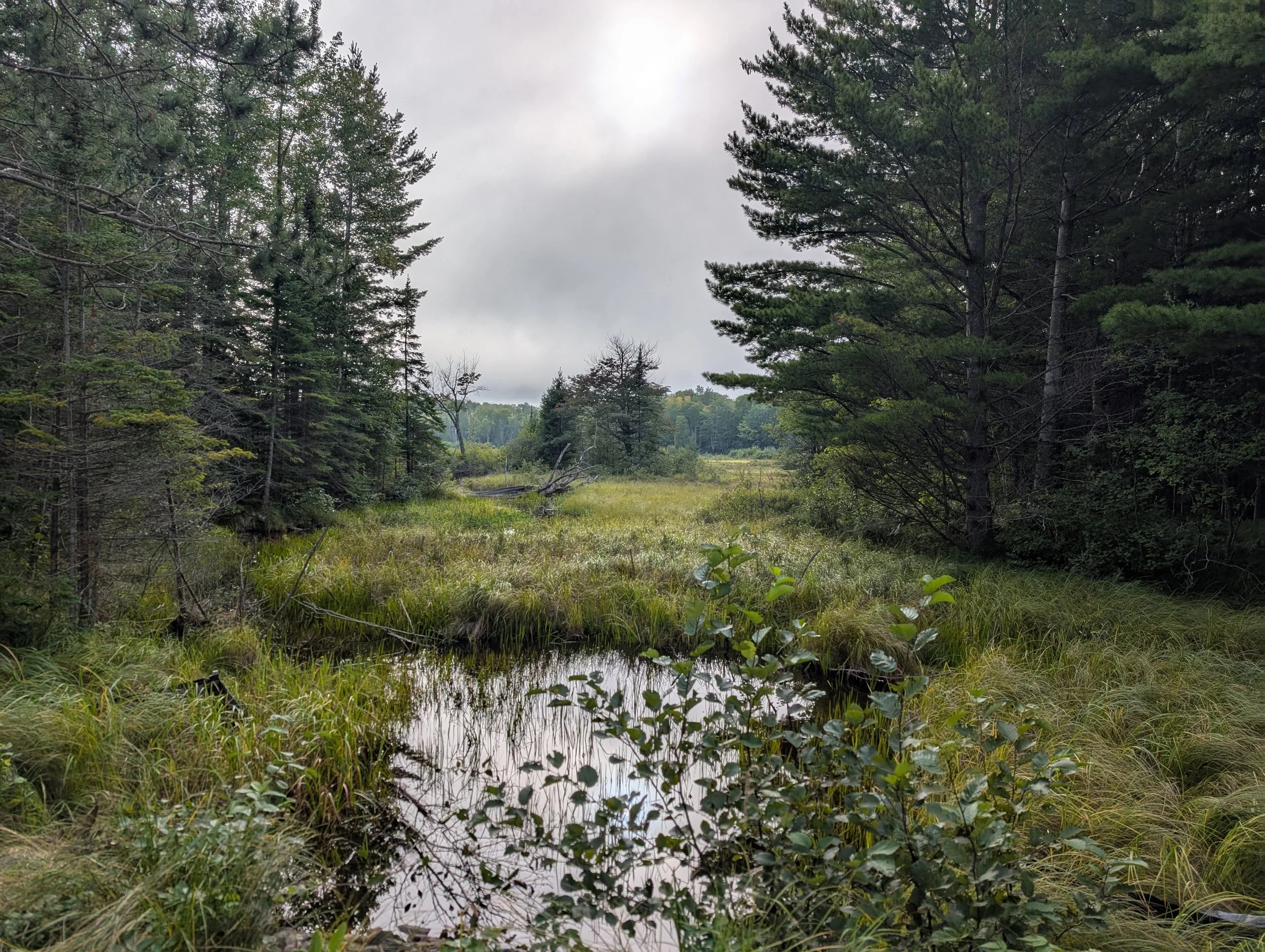
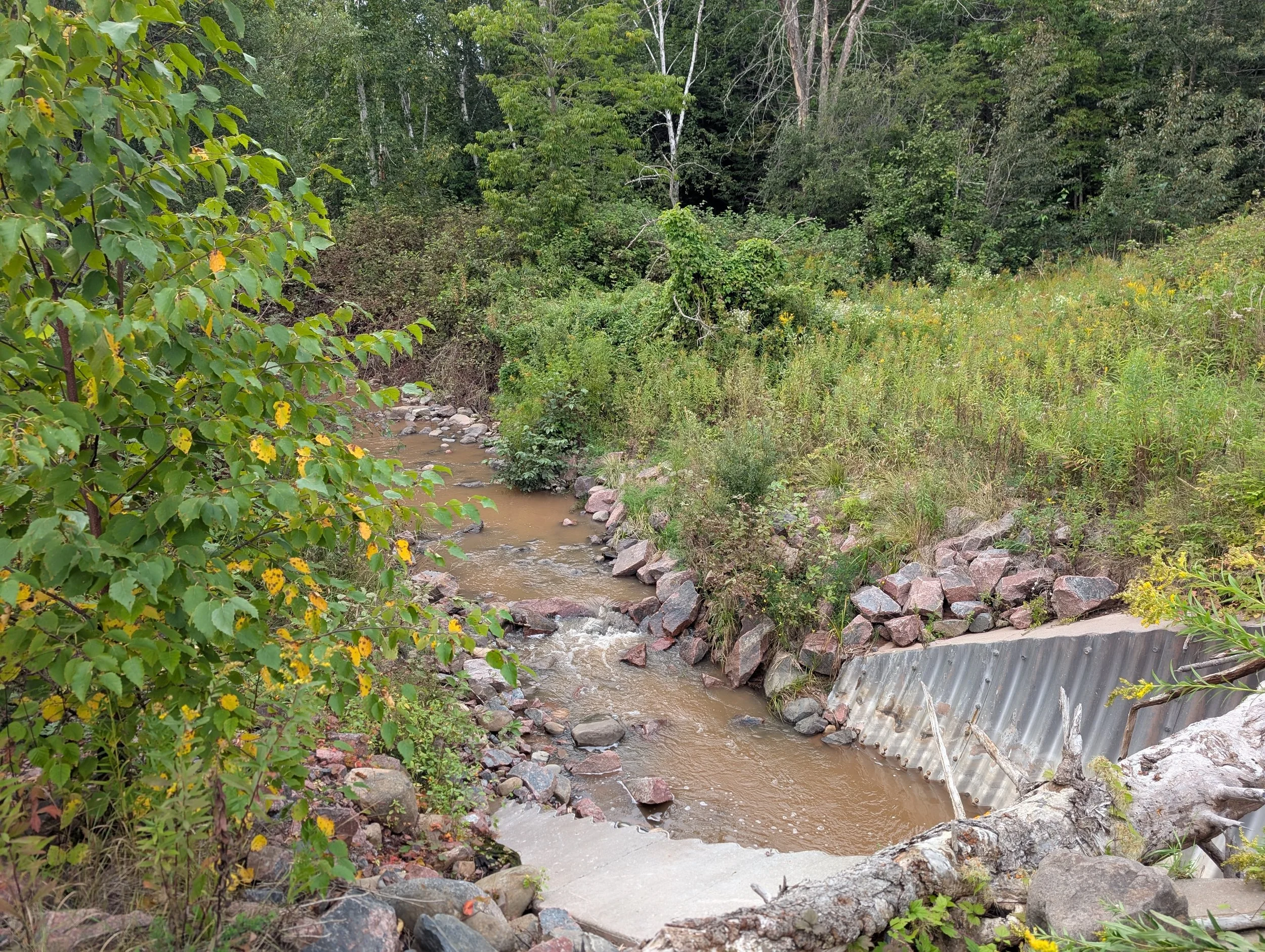
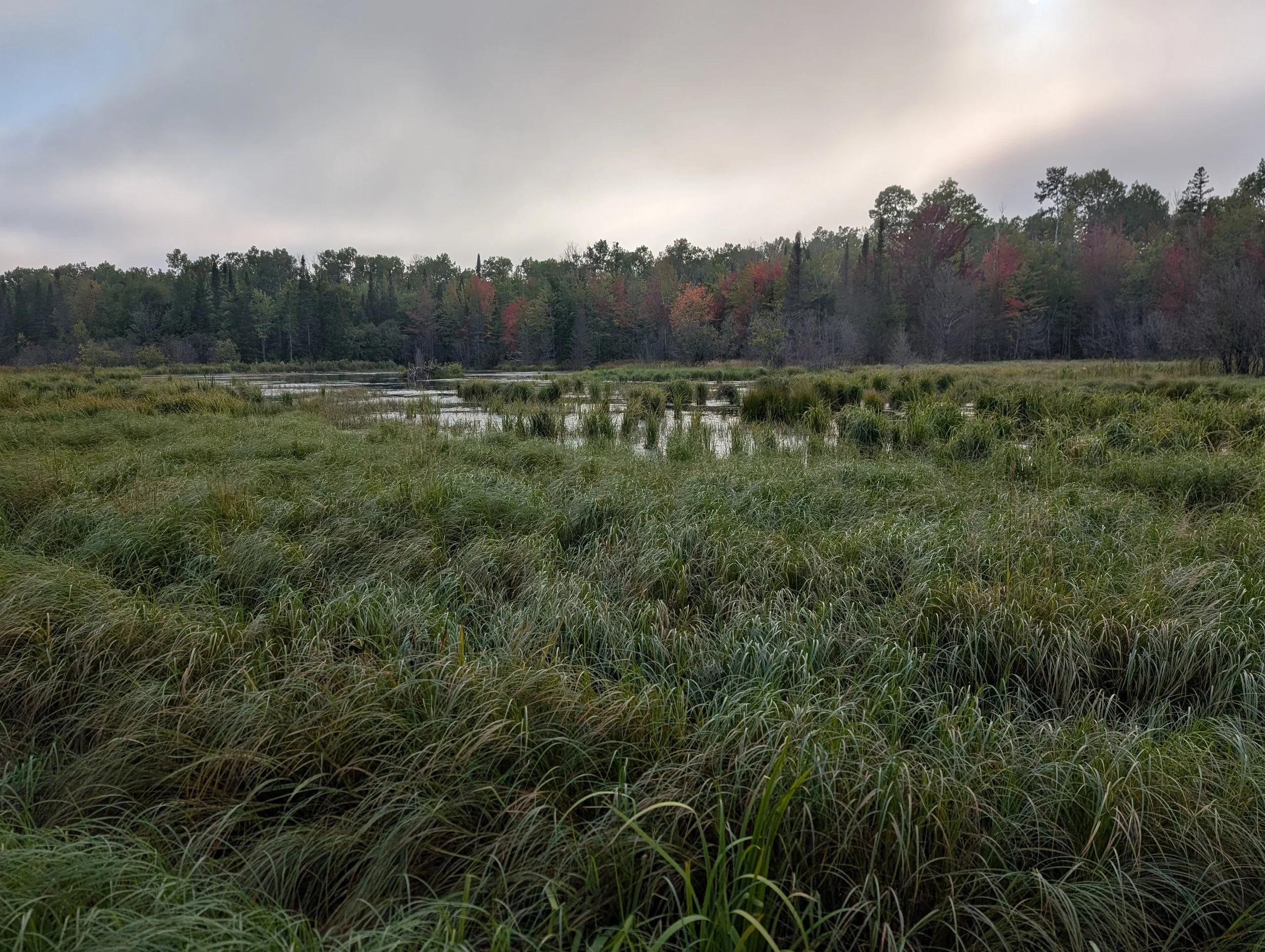
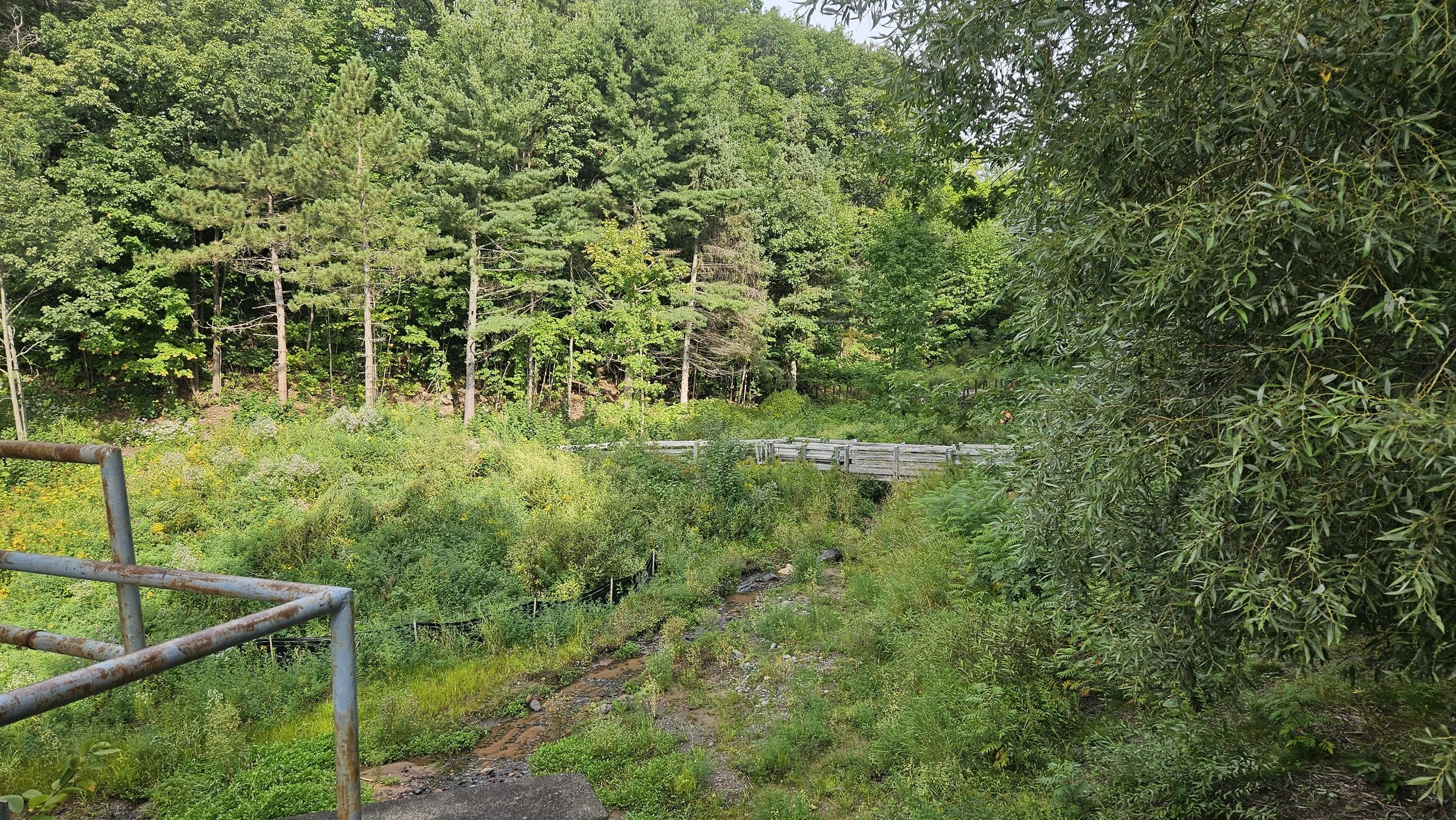
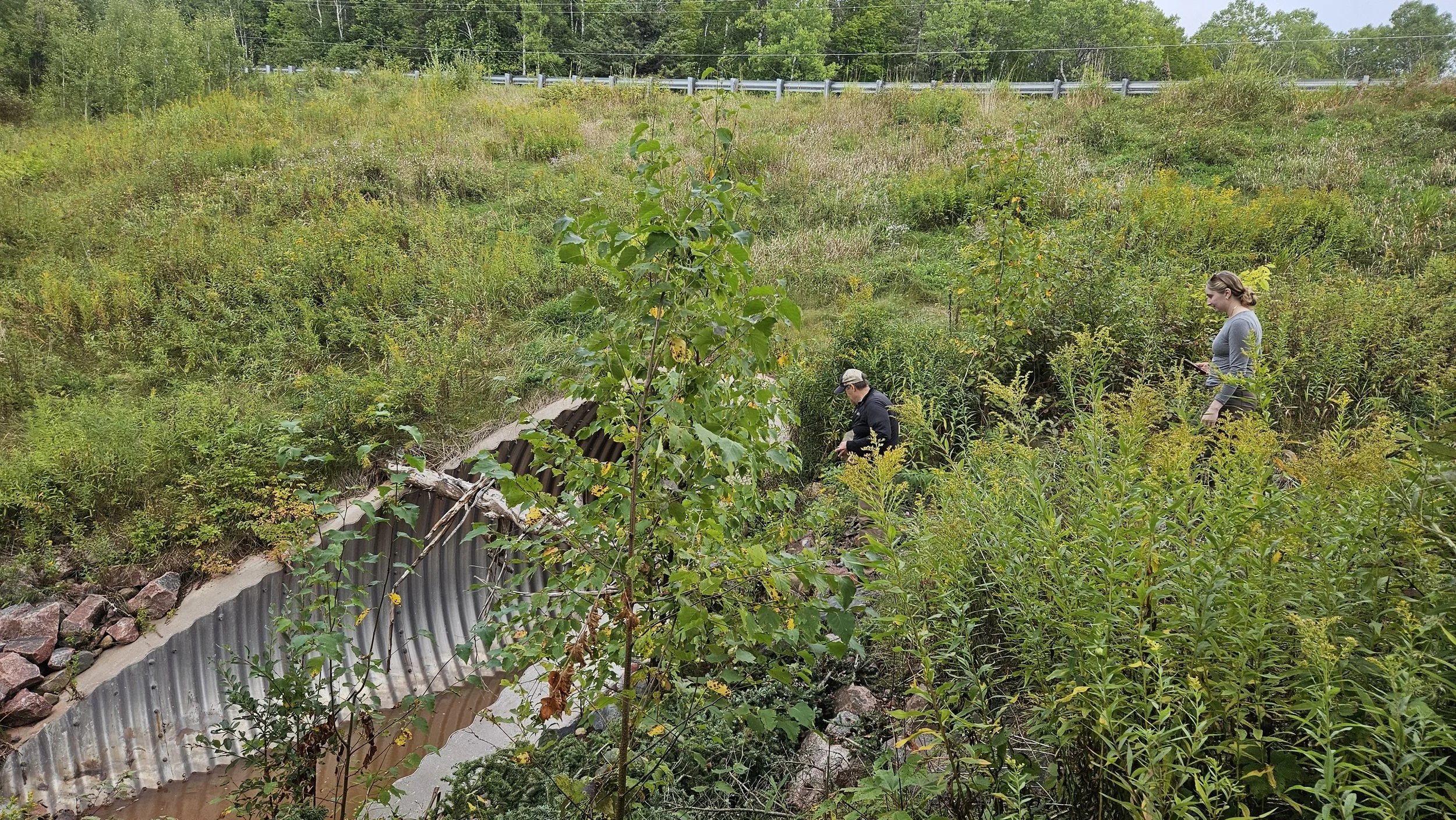
O’Duggan Returns from Alaska Research with GSS-partner, AK-BioMap
In July, SMUMN GSS, Technician Fionn O’Duggan flew to Kodiak, Alaska and took part in a 25-day research cruise with GSS partner Alaska Biomap Scientific Services and a small team of National Oceanic and Atmospheric Administration (NOAA) scientists on board the Lady Sea. The goal of the cruise was to gather data to validate and enhance an Individual Based Model (IBM) for pacific cod in the Gulf of Alaska. Juvenile gadids (any fish in the cod family) were collected using beach seine nets at sample sites with desirable habitat for young gadids (protected bays abundant with sugar kelp and eelgrass). Water temperature, salinity, dissolved oxygen (DO) content, and substrate composition were recorded at each site. Baited underwater cameras were used as well to capture images of juvenile gadids to aid in estimation of relative abundance and health. Sample sites ranged from Sand Point on the Shumagin Islands to Seward on the Kenai Peninsula. After collection, the juvenile cod were brought on board to be identified, counted, measured, and fin clipped for later genetic analysis. This research stemmed from dramatic declines of Pacific cod abundance in the Gulf of Alaska since 2013 due to a period of anomalously warm water. The overarching goal of the study is to better predict Pacific cod population health, distribution, and abundance so the fishing industry might better adapt to future oceanic changes.
O’Duggan was joined on the trip by other interns, including Ella Kelly from the NOAA. A link to her NOAA blog is included below.
When he wasn’t beach seining or working in the boat’s lab, Fionn fished off the deck, cold plunged, enjoyed the wildlife, and beach combed for salmonberries and rocks.
NOAA Intern, Ella Kelly’s blog can be found here: LINK
GSS Intern: Leah Ramsey Tackles Invasive Species and Community Outreach on Kodiak Island
Leah Ramsey, a student at Winona State University and GSS student worker, is spending her summer with the Kodiak Soil and Water Conservation District in Alaska. Her internship has taken her from remote field sites like Uganik Cannery to the heart of Kodiak’s community gardens and native plant nurseries.
Working alongside Masumi from KSWCD, Leah is actively surveying and treating invasive species like orange hawkweed, common tansy, and foxglove. When weather keeps the team indoors, she’s managing GIS data, mapping treatment areas, and maintaining plant records for KSWCD’s herbarium.
Leah’s summer also includes a strong community outreach component:
Participating in Native Plant Week by hosting an arts and crafts night for kids
Helping lead a crayfish derby at Buskin Lake
Supporting Trail Day with the Alaska State Parks system
Volunteering in the community garden and native plant nursery, salvaging and growing local species for future sales at the farmer's market
“Every day is different—one day we’re hiking remote trails to treat invasives, the next we’re teaching kids about native plants,” Leah shared. “It’s a great way to connect science, people, and the land.”
GSS SMUMN is proud to support internships like Leah’s that foster leadership in environmental restoration, geospatial data collection, and community-based conservation work, as well as being thankful for the support of SMU Alumna Angie Steger, which helps us continue these programs.
GSS SMUMN Partners with Restoravore to showcase Local Watershed Restoration
GeoSpatial Services at Saint Mary’s University of Minnesota (GSS SMUMN) is proud to support Restoravore in their mission to restore and protect the Pleasant Valley Watershed through innovative, community-centered land management and restoration.
The Pleasant Valley Watershed: A Living Lab
Restoravore sees their home watershed as a working “proof of concept.” It serves as a hub for research, observation, and experimentation in restoration, grazing management, and native vegetation stewardship. With goals of building local food markets connected to ecological health, they envision terms like “prairie-fed” or “native-fed” becoming part of a regional identity.
GSS’s Role: Bringing the Story to Life
To support this work, GSS developed a dynamic story map using the ArcGIS StoryMap application. The story map format allows geographic information to be combined with narrative storytelling using text and multimedia content. The result is a geographically enabled and interactive digital story that highlights the exciting restoration work that Restoravore is conducting in its watershed.
Highlights of the project include:
Through the story map, users can interact with 3D applications, data visualization dashboards, and interactive web maps that showcase Restoravore’s restoration efforts in the Pleasant Valley watershed.
Explore the StoryMap:
Take a visual tour of the project, its progress, and what lies ahead:
View the Pleasant Valley Watershed StoryMap by clicking the link: Cultivating a Native Ecological Legacy
Why It Matters:
This StoryMap is more than a collection of maps—it’s a tool for:
• Planners and decision-makers who need actionable data for restoration
• Landowners and local stewards, who want to see and share results
• Educators and volunteers, who can use it as a resource in community outreach
• Everyone who cares about water quality, habitat, and rural resilience
Recently, Restoravore hosted one of the field trip events for the Northeast-Midwest Prescribed Fire Science and Management Workshop, along with the Prairie Enthusiasts, on the Pleasant Valley bluff. This event was presented to show how prescribed fire is used to restore and manage an exemplary goat prairie near Winona in the Driftless Area of southeast Minnesota. GSS Technician, Rainier Bergstrom-Conley, and GSS/Cascade Meadow Summer Interns, Gabriella Acosta and Gavin Stichman, were able to attend the event and experience the work firsthand.
GSS SMUMN is excited to continue supporting innovative and collaborative watershed work with Restoravore and other local partners. Together, we’re connecting data, land, and people—one story at a time.
GSS SMUMN Intern Spotlight: Lola Schwinghamer Supporting Watershed Science in Alaska
This summer, GSS student worker Lola Schwinghamer, a student at Saint Mary’s University of Minnesota, is gaining hands-on experience in watershed science through an internship with the Kenai Watershed Forum in Soldotna, Alaska, sponsored by SMUMN, GSS and SMU Alumna Angie Steger.
Lola’s work focuses on monitoring water temperature and stream flow—vital components in understanding and protecting fish habitat throughout the Kenai Peninsula. In addition to field monitoring, she’s spending time with KWF’s invasive species program, assisting staff member Katrina with identifying and spraying invasive plants that threaten native biodiversity.
From wading into streams with temperature loggers to hiking riverbanks searching for invasive weeds, Lola is contributing to meaningful conservation work while gaining valuable field experience in the Alaskan landscape. Lola has even connected with SMUMN & GSS Alumn Katrina Danziger, who now lives in the Kenai area and continues work she was a part of on previous GSS internships!
“Getting to be out in the field every day and learn from professionals has been amazing,” said Lola. “I’m learning a lot about how environmental science is applied at the community level.”
The internship is part of GeoSpatial Services’ ongoing partnerships with conservation organizations around the country to provide real-world opportunities for student workers and is generously supported directly by SMU Alumna Angie Steger.
Wyoming Part 2 ! Mapping Water, Building Relationships: GSS Field Work Continues in Wyoming
GeoSpatial Services (GSS) at Saint Mary’s University of Minnesota is continuing wetland mapping work in Wyoming, as part of its ongoing contributions to the U.S. Fish and Wildlife Service’s National Wetlands Inventory (NWI). Following the successful first half of the field hitch working on Bureau of Land Management (BLM) lands in eastern Wyoming, the team has now turned its focus westward to the Wind River Reservation—home to the Eastern Shoshone and Northern Arapaho Tribes.
The effort reflects GSS’s ongoing commitment to productive partnerships and to improving the understanding of water resources, water rights, and usage efficiency throughout the region.
Field Team & Tribal Collaboration
This segment of the project brought together a strong team of professionals and partners, including:
• Andy Nadeau (Field Lead)
• Isabelle McNeill (Field Technician)
• Eric Lindquist (Project Manager)
• Hildred Hill (USFWS Intern)
• Andy Robertson (GSS Executive Director)
The crew was welcomed by and met with representatives from Tribal Fish and Game, including Art Lawson, as part of the broader effort to align mapping goals with local priorities and ecological stewardship.
Field Verification & Wetland Science
Field work remains a cornerstone of the NWI update process. Across the Wind River landscape, the team visited numerous check sites to validate the accuracy of mapped wetland features previously identified through aerial imagery. This hands-on ground-truthing included:
• Photo interpretation validation to confirm visual wetland indicators
• Soil sampling and analysis to identify hydric (wetland) soils
• Vegetation surveys to identify hydrophytic plant species
• Hydrologic assessments to evaluate water sources and saturation levels
These methods ensure that mapped wetlands meet federal criteria and accurately reflect real-world conditions. The data gathered on-site directly supports the development of digital wetland maps that feed into the national geospatial dataset used for conservation, planning, and policy-making.
A Collaborative Campus Effort
While the field crew worked across the plains and foothills of central Wyoming, Saint Mary’s students back on campus contributed to the project through image analysis, GIS data management, and map production tasks. This dual-track model provides students with critical hands-on experience in applied environmental science while advancing meaningful conservation work.
A Legacy of Impact
This is GSS’s fifth wetland mapping project in Wyoming since 2018, underscoring the organization's long-term investment in the region. The Wind River phase adds another meaningful chapter, highlighting how scientific fieldwork, Indigenous knowledge, student engagement, and agency partnership can come together to better understand and protect our nation’s water resources.
As climate change, land use pressures, and ecological needs increase, accurate wetland data is more important than ever. GSS’s work helps ensure that decisions around land management, water use, and conservation are informed by science, supported by partnership, and grounded in respect for both people and place.


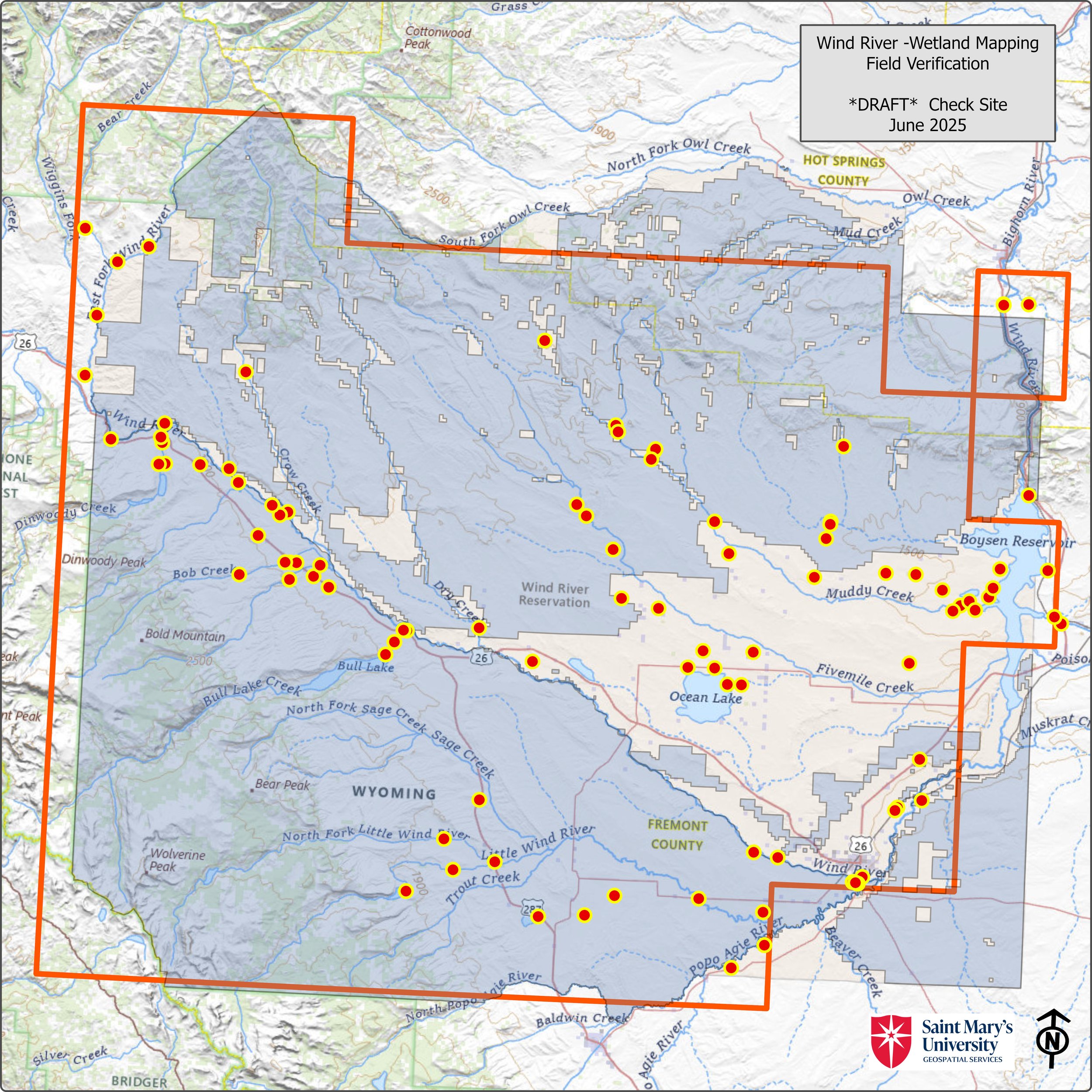





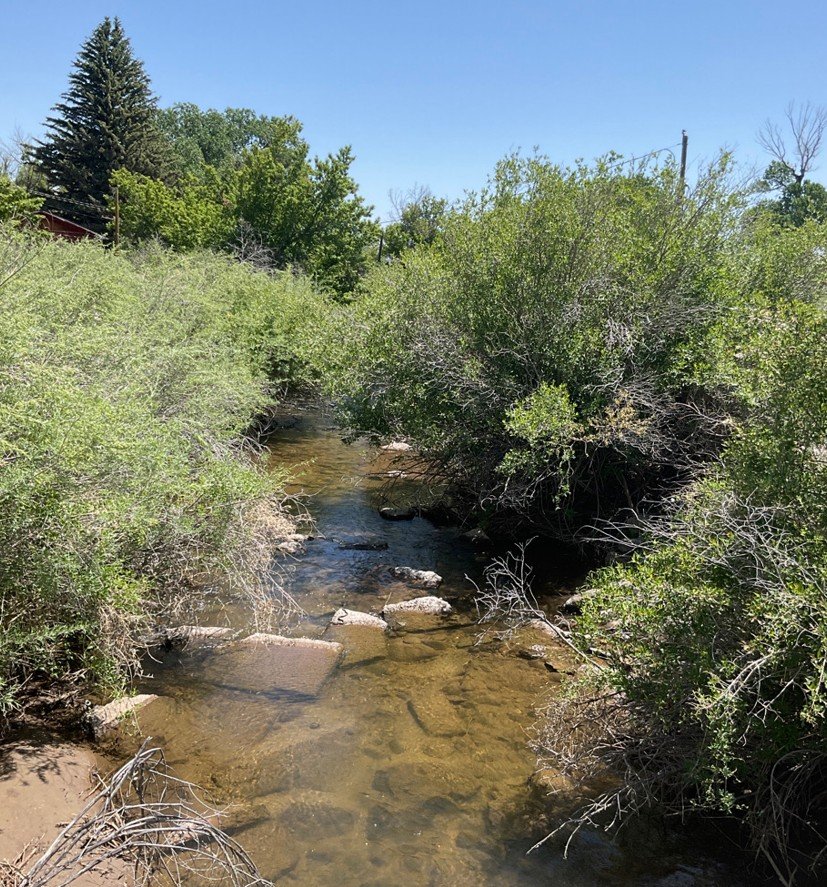

GeoSpatial Services and BLM Continue Wetland Mapping for National Wetlands Inventory in Wyoming
Casper, WY to the Black Hills – Summer 2025
This spring and summer, GeoSpatial Services (GSS) at Saint Mary’s University of Minnesota (SMUMN) returned to Wyoming to support the Bureau of Land Management (BLM) in its ongoing efforts to enhance the National Wetlands Inventory (NWI). This marks the fourth GSS-led wetland mapping project in the state since 2018, continuing a strong and productive partnership aimed at improving the understanding of Wyoming’s wetland resources.
The current project focuses on a broad region stretching from the Casper area eastward into the Black Hills, encompassing a diverse and ecologically important landscape of prairies, badlands, riparian corridors, and forested hills. These areas contain a variety of wetland habitats critical to wildlife, water quality, and ecological health.
Leading the field effort is Andy Nadeau, a seasoned GSS wetland scientist, with Technician Isabelle McNeill assisting in data collection and logistics. Eric Lindquist, GSS Project Manager, coordinated field planning and stakeholder communication. The team conducted extensive field verification to support photo interpretation and wetland delineation.
Field work is a critical component of the NWI update process. The GSS crew visited numerous check sites to confirm the presence, classification, and extent of wetland features identified in aerial imagery. This on-the-ground work included:
· Photo interpretation validation
· Soils analysis to confirm hydric conditions
· Vegetation identification to verify wetland plant communities
· Hydrologic assessments to determine water presence and source
These field-verified data points ensure the accuracy of the wetland maps that are being compiled and digitized for integration into the national dataset. Meanwhile, SMU students back on campus contributed to the project by analyzing imagery, managing GIS data, and assisting with map production and reporting—providing them with valuable experience in applied environmental science.
This project continues a proud tradition at GSS of combining academic excellence, student mentorship, and real-world environmental work. As climate change, land use pressures, and habitat conservation become ever more pressing, the NWI plays a vital role in planning, policy, and stewardship.
Smith River Watershed: GSS & the Tolowa Dee-ni' Nation
From May 6–8, staff from GeoSpatial Services at Saint Mary’s University of Minnesota (GSS SMUMN) traveled to Northern California to conduct fieldwork in the Smith River Watershed—a region known for its ecological richness and cultural significance.
This trip was part of GSS’s ongoing partnership with the Tolowa Dee-ni' Nation, focusing on wetland mapping efforts that support tribal land stewardship and conservation goals. The Smith River Watershed, located near the Oregon border, is home to unique coastal ecosystems that provide critical habitat and environmental services.
During the visit, GSS staff Kathy Allen, Avrey Simonson, and Eric Lindquist carried out on-the-ground assessments, collected geospatial data, and—most importantly—had the opportunity to connect with tribal staff, learning more about the land from those who know it best. Highlights of the trip included driving through redwood forests, exploring ocean beaches, spotting Roosevelt elk, and finally finding endemic Pacific banana slugs on the last day of the trip.
These kinds of collaborations are at the heart of our mission: using science and technology to support com munities in managing and protecting natural resources. We're honored to be part of this important work and look forward to continuing our partnership with the Tolowa Dee-ni' Nation.
🌿 Stay tuned for more updates as we continue our work in the West!
#GeoSpatialServices #SMUMN
GSS SMUMN Partners with Navajo Nation for Wetland Restoration and Conservation
In a powerful step toward collaborative environmental conservation, GSS SMUMN Director Andy Robertson recently joined forces with Rio Grande Return and Amigos Bravos for a key meeting with the Navajo Nation in Window Rock, AZ. The gathering focused on advancing wetland restoration efforts, exploring innovative conservation strategies and identifying wetlands on the Navajo Reservation that represent candidates for designation as New Mexico Wetland Jewels.
Bringing Wetland Conservation to the Forefront
The discussions revolved around critical wetland initiatives, including Wetland Program Development and Low-Tech Process Based (LTPBR) wetland and stream restoration techniques using beaver mimicry. A major highlight was the GSS Wetland Jewels GIS Analysis, a state-of-the-art tool designed to identify and prioritize essential wetland areas for restoration, preservation and enhancement.
The he team examined several potential restoration opportunities in the Crystal Creek Watershed, evaluating its potential for wetland enhancement and broader ecological benefits. Sites included established natural beaver colonies, mixed land-use locations supporting both developed agriculture and wildlife habitat and high-elevation headwater locations where erosion is degrading floodplain connectivity.
Harnessing Nature-Based Solutions
A key topic of discussion was Low-Tech Process Based wetland and stream restoration, a strategy that leverages beavers' natural ecosystem engineering skills to improve water retention, enhance habitat diversity, and strengthen climate resilience. By adopting these techniques, the Navajo Nation can cultivate healthier wetland ecosystems that support biodiversity and long-term water sustainability.
Merging Traditional Knowledge with Modern Conservation
This collaboration underscores the importance of integrating indigenous science with cutting-edge conservation approaches. By working together, these partners aim to protect and revitalize vital wetland environments, setting a precedent for effective and sustainable environmental stewardship.
Expanding Partnerships for Greater Impact
Beyond the Navajo Nation discussions, Robertson also visited the White Mountain Apache Reservation to reconnect with past collaborators and discuss ongoing wetland conservation projects. Having previously worked in the region in the early 2010s, this visit reinforced GSS SMUMN’s commitment to long-term environmental partnerships and the need for ongoing efforts to continue to address climate modification, particularly storm intensity and prolonged drought. The team had significant discussions on where to focus efforts on wetland and stream restoration in order to achieve the most significant results from limited budgets and then took to the field in order to review past activities and discuss new strategies including LTPBR techniques.
Stay tuned for more updates on GSS SMUMN’s wetland initiatives and the ongoing efforts to restore and protect these crucial ecosystems!





GSS & KWF: Advancing Non-Point Source Pollution Research
In February, GSS’s Jeff Knopf presented an innovative project focused on identifying non-point source pollution in the City of Kenai. This pilot project, conducted in collaboration with the Kenai Watershed Forum (KWF), aims to develop a GIS-based methodology for detecting non-point source pollution hotspots.
Understanding Non-Point Source Pollution
As the population grows, urban development increases, leading to the replacement of natural landscapes with impervious surfaces such as roads, parking lots, and buildings. These surfaces prevent the natural absorption and filtration of rainfall, causing runoff to flow directly into nearby waterbodies through storm drains and culverts. This shift in hydrology can have significant effects on aquatic habitats, particularly in urban areas surrounding the Kenai and Soldotna regions.
GSS SMUMN’s Role and Approach
The primary objective of this study was to test a proof of concept: Could GIS modeling be used to pinpoint areas with significant non-point source pollution contributions? By identifying these pollution hotspots, stakeholders can make informed decisions about green infrastructure solutions to mitigate their impact on water quality.
Developing a Green Infrastructure Strategy
To support better stormwater management, GSS SMUMN developed a systematic process for selecting locations suitable for nature-based stormwater solutions. The workflow for this analysis included the following key steps:
Acquiring Datasets – Gathering relevant geographic and environmental data for analysis.
Hydro-Conditioning the LiDAR DEM – Processing elevation data to enhance hydrological accuracy.
Generating Impervious Surfaces – Identifying and mapping impervious areas contributing to runoff.
Deriving Flowlines and Creating a Network – Establishing how water moves through the urban landscape.
Quantifying Impervious Surface Contributions – Assessing runoff impact at key pour points to guide green infrastructure planning.
This project is part of GSS SMUMN’s broader effort to apply geospatial analysis to environmental challenges. By integrating GIS modeling into conservation planning, our team is helping communities better understand the effects of urbanization on aquatic habitats and identify opportunities for sustainable stormwater management.
The findings from this pilot project will help inform future conservation and development efforts, ensuring that the unique and valuable water resources of the Kenai Peninsula remain healthy for generations to come.
